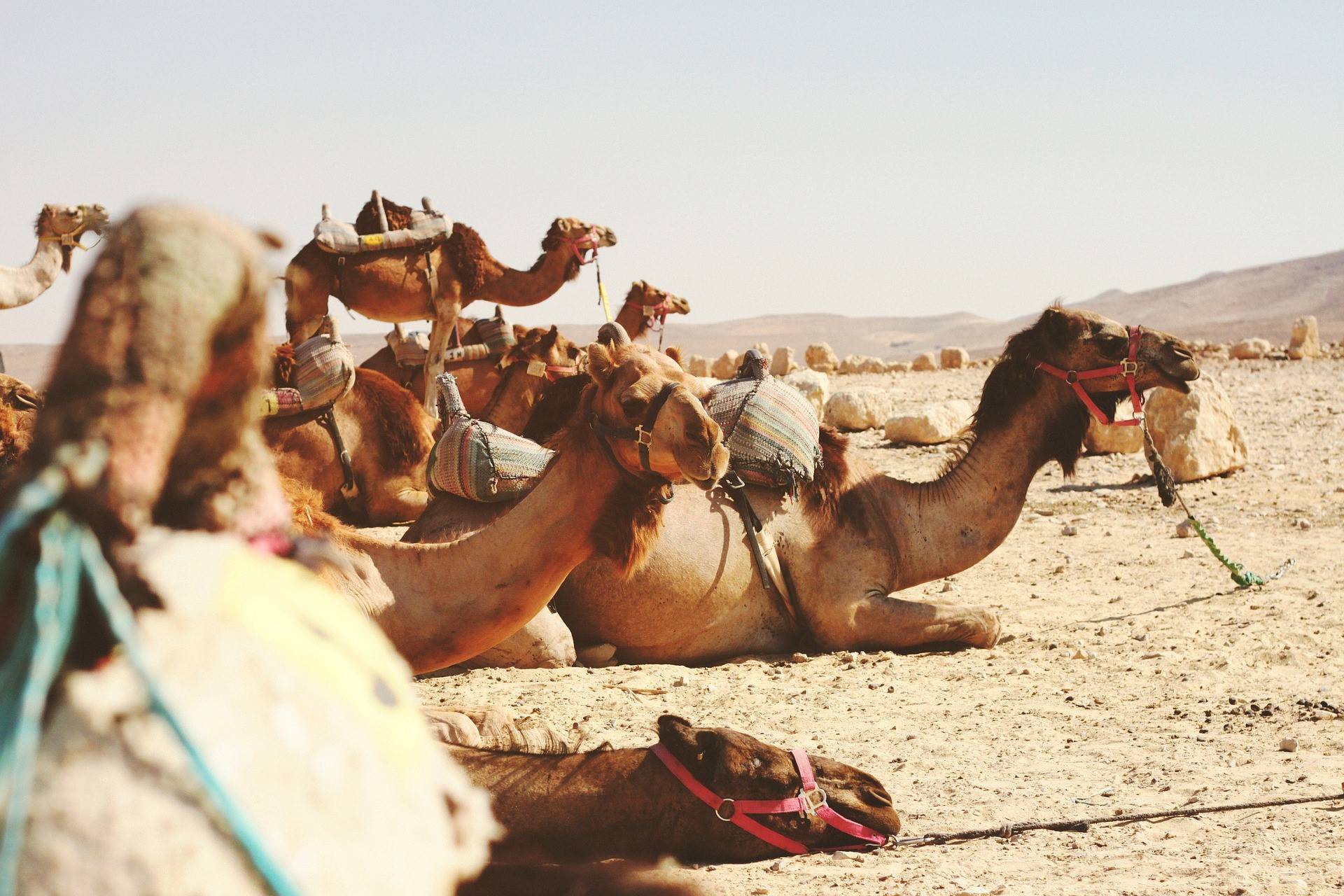Camels are often called the “ships of the desert” because they carry people and goods across long, dry stretches just like ships do on the sea.
How have the Camels been surviving in the desert?

Deserts are hot during the day and cold at night, with very little rainfall. Isn’t it amazing how camels manage to survive in such harsh climatic conditions?
The reasoncamels do so well in a desert environment is due to a variety of natural adaptations that give them an advantage. We could call these survival characteristics their own desert toolkit – self-closing nostrils, broad padded feet, a hump that stores fat for energy, thick skin that reduces water loss, and unique blood cells that help in water regulation. But instead of stopping at a few words, let’s look deeper into how they truly manage this incredible feat.
The Savior Hump!
You may wonder why camels have such a large hump on their back, and you’ve probably thought it’s for storing water, right?
Well, not exactly. Camels have special oval-shaped red blood cells that allow their blood to circulate more efficiently and tolerate dehydration better than most animals. Their hump, on the other hand, stores fat, which acts as an energy reserve when food is scarce in the desert.
This stored fat can sustain them for long periods, helping them survive even when they don’t find much to eat. It’s like having an internal energy bank!
Large animals like camels require a lot of energy, but their unique metabolism allows them to slowly use the fat from their hump, much like taking small portions from a pantry until they can replenish it. In favorable conditions, a healthy camel can go weeks without eating substantial food.
Now, you may have also seen camels with two humps – these are Bactrian Camels, native to Central Asia. Both humps serve the same purpose – storing fat for energy.
Do camels drink loads of water?
While it might seem like camels need to constantly drink gallons of water, the truth is they are very efficient water conservers. They extract moisture from the food they eat and can go for several days without drinking.
A well-fed and hydrated camel can walk over 160 kilometers (about 100 miles) in a hot desert before needing to drink again. Interestingly, wild Bactrian camels can even drink brackish or salty water when no freshwater is available, although freshwater remains more beneficial for hydration.
Can camels smell water?
There’s a popular belief that camels can smell water from miles away. In reality, scientists have found that camels can detect the scent of damp earth, which helps them locate areas where water may be present.
Their sensitive sense of smell allows them to pick up the scent of damp soil from a distance of around 3 kilometers (1.8 miles). By following the smell carried by the wind, they can find water sources without needing to rush – since they don’t require drinking every single day.
Nature’s Desert Survivor
Camels have developed incredible natural adaptations that allow them to live and work in the desert – from their large, padded feet that prevent sinking into the sand, to their fat-storing humps, and their ability to conserve and efficiently use water.
So, when we think of camels, three words truly define them – Resilience, Determination, and Willpower!
Frequently Asked Questions
What are camels called in the desert?
How long can camels survive in the desert?
Camels can survive for weeks without water and food. Their bodies are built to handle the harsh desert climate better than most animals.
Do camels give milk?
Yes! Camels produce milk that’s rich in nutrients. In many desert regions, it’s an important part of the local diet.
Why are camels able to survive in the desert?
Camels survive because they have special features like humps to store fat, long eyelashes to block sand, and the ability to go without water for long periods.
